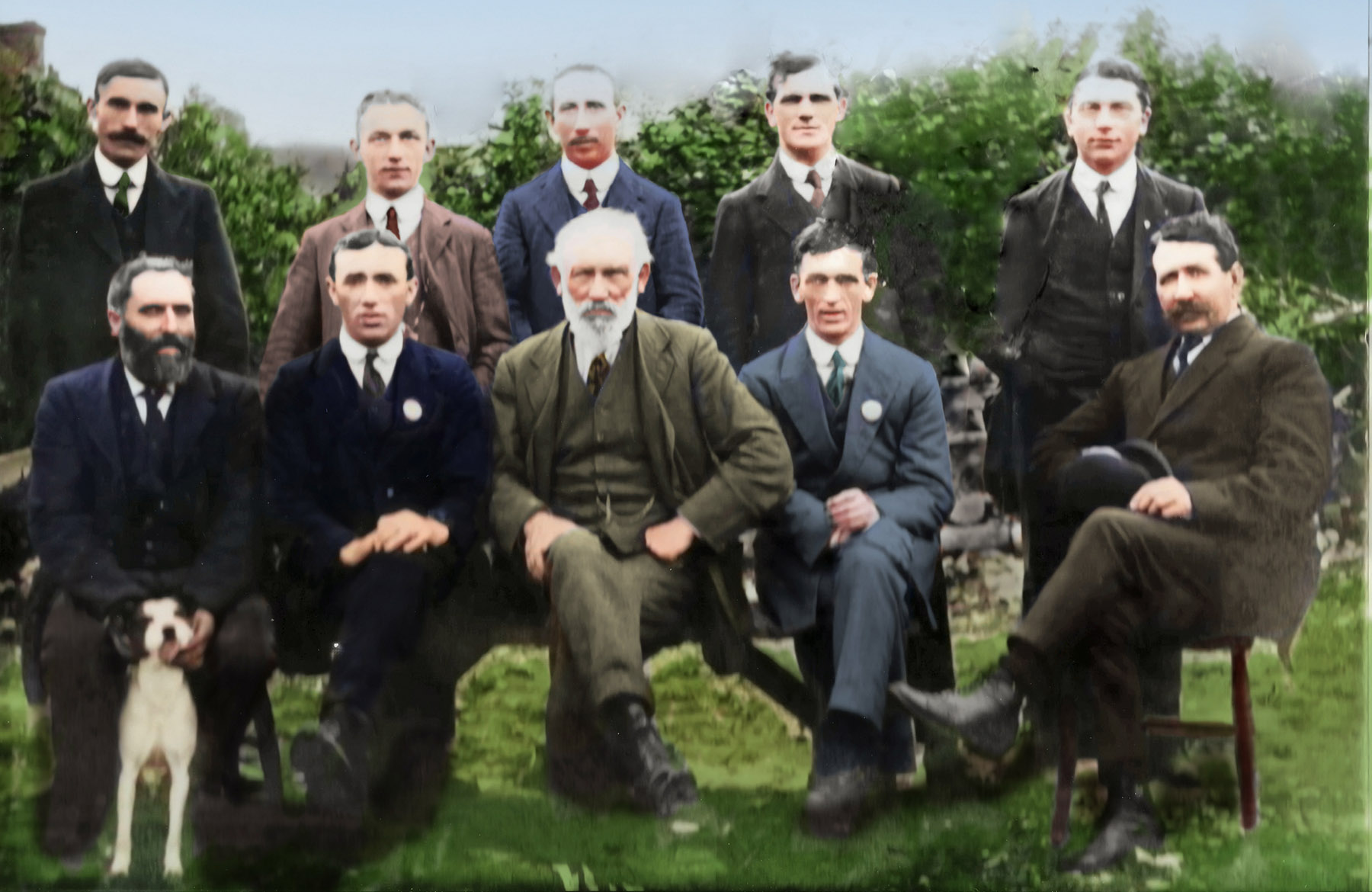Easter Rising 1916

Throughout the Parish the Irish Volunteer Movement was barely distinguishable in personnel from the G.A.A. As most of the members of the local units of the volunteers were either, officials or players in the G.A.A. The town and district had been the centre of national and revolutionary activity for many years. In the 1870's there was a large circle of I.R.B. in the area which was maintained during the 'Land War' started by Michael Davitt in 1875.
The people of the Parish gave the movement their wholehearted support and after the assassination of Blake and Burke near Loughrea several locals were imprisoned including John F. and Peter Broderick. At that time seven hundred 'Gentry' owned half the land of Ireland with five of them owning 20,366 acres in the Athenry district alone.
In the early 1900's Athenry became the headquarters of the I.R.B. movement in County Galway and during the great land agitation of the following years the movement took full advantage of the conditions that then existed to promote revolutionary propaganda among the young men of the County. Their 'work' did not go unnoticed by the English authorities who responded by drafting in a 120 strong force of R.I.C. to the town which had a population of less than 1,000.
The starting of the Volunteers gave the I.R.B. the opportunity they were waiting for and they immediately availed of it. After a meeting held in Galway to organise the movement and addressed by Sir Roger Casement, Padraic H. Pearse and Eoin McNeill it was decided to establish a company in Athenry. A public meeting was held in January 1914 and formed a company with a large number enrolling in the movement.
A working committee was formed comprised of Frank Hynes, Stephen Jordan, Dick Murphy, Sean Broderick, Larry Lardner, Pat Hynes, Joe Rooney, John F. Broderick, Jim Barrett and Thomas Cleary. Drilling started immediately in the Town Hall, which was made available, free of charge by Dick Murphy. Within a short time ten to twelve other companies were formed in the locality as the movement rapidly developed all over the County. The Back Lawn (Kenny Park) was the venue on June 29th 1914 for a review of all the volunteers in the County. Roger Casement was invited to act reviewing officer but could not attend. He was replaced by Colonel Maurice Moore with up to 3,000 taking part.
Athenry became the Brigade H.Q. and in October Owen McNeill reviewed a 350 strong force of local volunteers and was reported to be very impressed by the efficiency displayed. Liam Mellows visited Athenry for the first time in December but only stayed for a few days. He returned in February 1915 and began training local officers and men in the surrounding companies until July when he was arrested and imprisoned. On his release three months later 700 volunteers paraded carrying arms during a "demonstration of welcome". The Parade took place in the Back Lawn and armed sentries were posted at all the entrances and did not allow the R.I.C. enter the field. Mellows continued to work in the Athenry district and became a familiar figure in the town.
Athenry and surrounding companies mobilised at full strength during the 1916 Easter Rising. They took the Agricultural College before being joined by Liam Mellows and his companies. They then marched to Moyode Castle where they remained until Friday. Following the insurrection several volunteers were imprisoned or deported by the British to Wormswood Scrubbs Prison among them twelve men from Athenry Parish who were positively identified by a man at Moyode. Known as the twelve apostles they were Thomas Barrett and Charlie Whyte of Caheroyan, the Grady Brothers of Church St. Martin Hansberry Rahard, Peter Murray Derrydonnell, Michael Higgins Castlelambert, Patch and Thomas Kennedy Sliabh Rua, Jack Hanniffy Tallyho, Murty Fahy Sliabh Rua and Michael Donghue.
Frank Hynes escaped with Liam Mellows, Stephen Jordan and Richard Murphy who remained 'on the run' until the 5th. of June when they surrendered at Tuam. The local papers carried a report on their surrender. "It was believed they were in the neighbourhood of the Town for a number of days. During their detention in Tuam permission for friends to visit was given. They appeared in excellent health and spirits and related thrilling incidents and escapades while 'on the run' from military and police."
